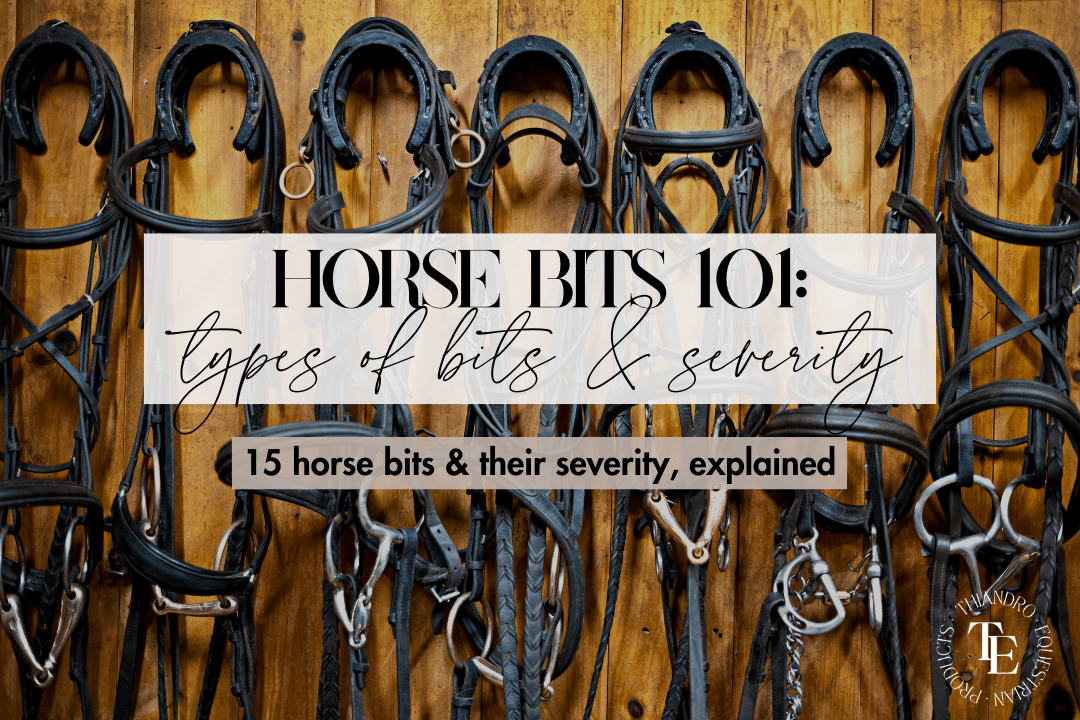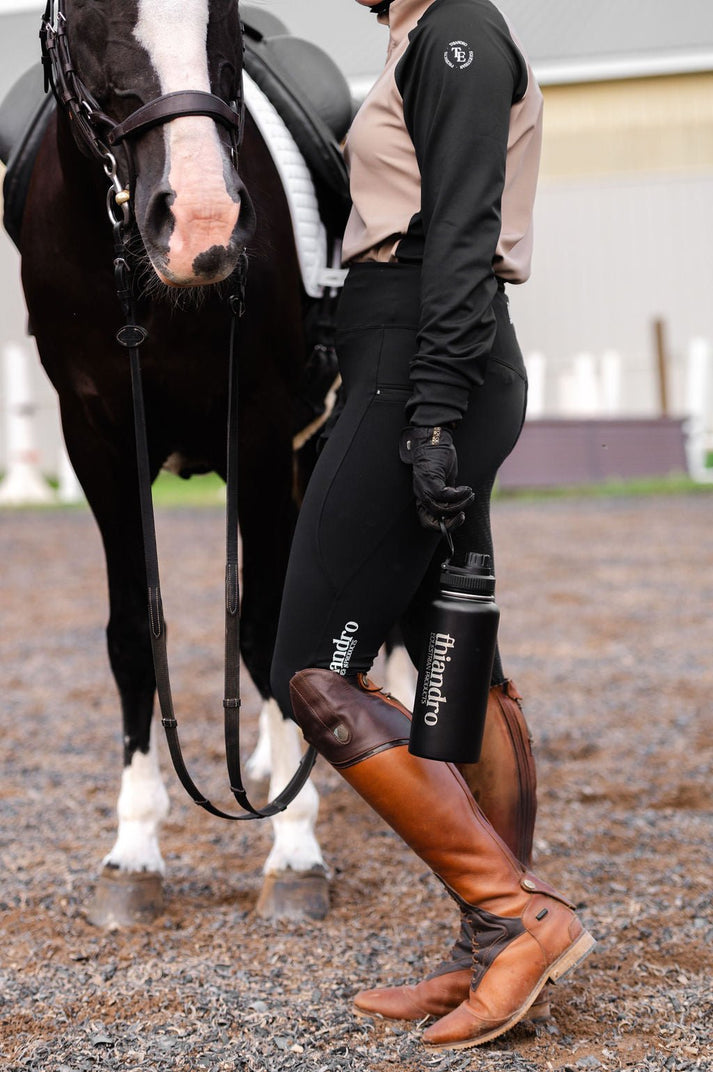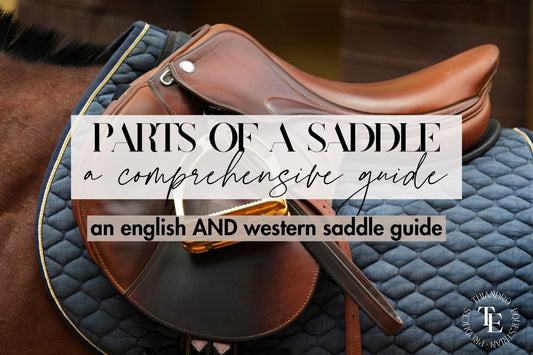Just like having equestrian apparel that fits like a second skin and keeps you comfortable in and out of the saddle, figuring out an appropriate bit for your horse is essential for every equestrian. This is true whether you're a seasoned rider or just starting out. Bits play a crucial role in communicating with your horse and guiding them effectively. In this comprehensive guide, we'll explore 15 common horse bit types, ranging from the mildest to more severe. From the classic snaffle to the intricate elevator, each bit serves a unique purpose in horse riding. Let's dive in and discover the nuances of horse bits, their designs, and their suitability for different riding disciplines.
Disclaimer: While this guide is a great starting point for finding the right bit for your horse, it's not a substitute for working with a qualified trainer. Your trainer will have the best information for you on how your horse may respond to the following types of bits, and they can help you decide what is suitable or not.
Different Types of Horse Bits, Their Severity, and Why They’re Commonly Used
Snaffle Bits
Snaffle bits are widely used in horse riding due to their mild action and simple design. They consist of a jointed or unjointed mouthpiece with loose rings or fixed cheeks and come in several different types:
- Loose Ring Snaffle
- D Ring Snaffle
- Eggbutt Snaffle
- French Link Snaffle
Suitability: Ideal for young or sensitive horses, as well as general riding and training purposes.
Full Cheek Snaffle
The full cheek snaffle features elongated cheeks that prevent the bit from sliding through the horse's mouth. It provides additional lateral control.
Suitability: Recommended for horses that require more steering assistance, such as those learning to bend and turn.
Happy Mouth Bit
Constructed from a soft, flexible polymer material, the happy mouth bit offers a gentle, comfortable experience for horses. It's often preferred by riders seeking a kinder alternative to metal bits.
Suitability: Suitable for horses with sensitive mouths or those prone to bit-related issues.
Mullen Bit
The mullen bit has a solid, straight mouthpiece with no joint. It applies pressure evenly across the tongue and bars, offering stability and a clear signal to the horse.
Suitability: Commonly used in dressage and showing disciplines, as well as for horses that dislike jointed bits.
Shop Our Riding Tights
Baucher Bit
Also known as a hanging cheek or elevator bit, the baucher bit features a fixed cheekpiece that provides subtle poll pressure. It encourages the horse to lower their head and soften their neck.
Suitability: Suitable for horses that need assistance in maintaining a consistent head carriage and contact with the bit.
Waterford Bit
The waterford bit consists of multiple flexible links or balls, creating a chain-like mouthpiece. It provides a fluid, responsive feel and encourages salivation.
Suitability: Ideal for strong or heavy horses that tend to lean on the bit, as well as those that dislike the feeling of a solid mouthpiece.
Dr. Bristol Bit
The Dr. Bristol bit features a flat, angled mouthpiece with a slight "V" shape. It applies pressure to the horse's tongue and bars, encouraging them to soften and accept contact.
Suitability: Commonly used in the jumper and eventing disciplines, as well as for horses that require additional tongue relief.
Pelham Bit
The pelham bit combines elements of both a snaffle and a curb bit, featuring a jointed mouthpiece and shank with rein attachments. It offers versatility in rein placement and severity.
Suitability: Suitable for experienced riders seeking greater control and refinement, as well as for horses transitioning between snaffles and curbs.
Shop Our Base Layers
Corkscrew Snaffle
The corkscrew snaffle has a twisted mouthpiece that applies increased pressure to the horse's mouth. It offers a stronger signal and may discourage leaning or pulling.
Suitability: Recommended for horses that require a clearer communication and response, as well as those that tend to ignore lighter aids.
Twisted Wire Snaffle
Similar to the corkscrew snaffle, the twisted wire snaffle features a twisted mouthpiece for added pressure and control. It's designed to encourage responsiveness and obedience.
Suitability: Best suited for experienced riders with light hands and precise aids, as well as horses with a tendency to brace against the bit.
Hackamore
The hackamore, also known as a bitless bridle, applies pressure to the horse's nose, chin, and poll rather than their mouth. It offers a gentle alternative for horses with sensitive mouths or bit-related issues.
Suitability: Ideal for horses with dental problems, tongue injuries, or aversions to traditional bits, as well as for riders seeking a softer, more natural connection.
Elevator Bit
The elevator bit, also referred to as a continental or gag bit, features a jointed or solid mouthpiece with cheekpieces that apply leverage action when engaged. It offers variable levels of severity depending on rein placement.
Suitability: Suitable for experienced riders seeking greater control and refinement, as well as for horses that require a combination of direct and leverage aids.

Conclusion
Choosing the right horse bit is crucial for effective communication and harmony between horse and rider. From mild snaffles to more advanced curb bits, each type offers unique benefits and considerations.








